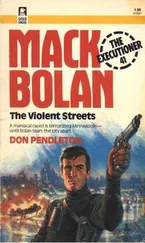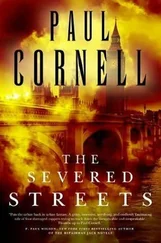When the detective arrives with pen and notepaper and begins the initial monologue to which a potential suspect or witness is invariably subjected, he has two goals in mind: first, to emphasize his complete control of the process; second, to stop the suspect from opening his mouth. Because if a suspect or witness manages to blurt out his desire for a lawyer-if he asks for counsel definitively and declines to answer questions until he gets one-it’s over.
To prevent that, a detective allows no interruption of his soliloquy. Typically, the speech begins with the detective identifying himself and confiding that this is some serious shit that the two of you have to sort out. In your favor, however, is the fact that he, the detective, is a fair and reasonable man. A great guy, in fact-just ask anyone he works with.
If, at this moment, you try to speak, the detective will cut you off, saying your chance will come in a little while. Right now, he will invariably say, you need to know where I’m coming from. Then he’ll inform you that he happens to be very good at what he does, that he’s had very few open cases in his long, storied career, and a whole busload of people who lied to him in this very room are now on Death Row.
Control. To keep it, you say whatever you have to. Then you say it over and over until it’s safe to stop, because if your suspect thinks for one moment that he can influence events, he may just demand an attorney.
As a result, the Miranda warning becomes a psychological hurdle, a pregnant moment that must be slipped carefully into the back-and-forth of the interrogation. For witnesses, the warning is not required and a detective can question those knowledgeable about a crime for hours without ever advising them of their rights. But should a witness suddenly say something that indicates involvement in a criminal act, he becomes-by the Supreme Court’s definition-a suspect, at which point he must be advised of his rights. In practice, the line between a potential suspect and a suspect can be thin, and a common sight in any American homicide unit is a handful of detectives standing outside an interrogation room, debating whether or not a Miranda warning is yet necessary.
The Baltimore department, like many others, uses a written form to confirm a suspect’s acknowledgment of Miranda. In a city where nine out of ten suspects would otherwise claim they were never informed of their rights, the forms have proven essential. Moreover, the detectives have found that rather than drawing attention to the Miranda, the written form diffuses the impact of the warning. Even as it alerts a suspect to the dangers of an interrogation, the form co-opts the suspect, making him part of the process. It is the suspect who wields the pen, initialing each component of the warning and then signing the form; it is the suspect who is being asked to help with the paperwork. With witnesses, the detectives achieve the same effect with an information sheet that asks three dozen questions in rapid-fire succession. Not only does the form include information of value to the investigators-name, nickname, height, weight, complexion, employer, description of clothing at time of interview, relatives living in Baltimore, names of parents, spouse, boyfriend or girlfriend-but it acclimates the witness to the idea of answering questions before the direct interview begins.
Even if a suspect does indeed ask for a lawyer, he must-at least according to the most aggressive interpretation of Miranda-ask definitively: “I want to talk to a lawyer and I don’t want to answer questions until I do.”
Anything less leaves room for a good detective to maneuver. The distinctions are subtle and semantic:
“Maybe I should get a lawyer.”
“Maybe you should. But why would you need a lawyer if you don’t have anything to do with this?”
Or: “I think I should talk to a lawyer.”
“You better be sure. Because if you want a lawyer then I’m not going to be able to do anything for you.”
Likewise, if a suspect calls a lawyer and continues to answer questions until the lawyer arrives, his rights have not been violated. If the lawyer arrives, the suspect must be told that an attorney is in the building, but if he still wishes to continue the interrogation, nothing requires that the police allow the attorney to speak with his client. In short, the suspect can demand an attorney; a lawyer can’t demand a suspect.
Once the minefield that is Miranda has been successfully negotiated, the detective must let the suspect know that his guilt is certain and easily established by the existing evidence. He must then offer the Out.
This, too, is role playing, and it requires a seasoned actor. If a witness or suspect is belligerent, you wear him down with greater belligerence. If the man shows fear, you offer calm and comfort. When he looks weak, you appear strong. When he wants a friend, you crack a joke and offer to buy him a soda. If he’s confident, you are more so, assuring him that you are certain of his guilt and are curious only about a few select details of the crime. And if he’s arrogant, if he wants nothing to do with the process, you intimidate him, threaten him, make him believe that making you happy may be the only thing between his ass and the Baltimore City Jail.
Kill your woman and a good detective will come close to real tears as he touches your shoulder and tells you how he knows that you must have loved her, that it wouldn’t be so hard for you to talk about if you didn’t. Beat your child to death and a police detective will wrap his arm around you in the interrogation room, telling you about how he beats his own children all the time, how it wasn’t your fault if the kid up and died on you. Shoot a friend over a poker hand and that same detective will lie about your dead buddy’s condition, telling you that the victim is in stable condition at Hopkins and probably won’t press charges, which wouldn’t amount to more than assault with intent even if he does. Murder a man with an accomplice and the detective will walk your co-conspirator past the open door of your interrogation room, then say your bunky’s going home tonight because he gave a statement making you the triggerman. And if that same detective thinks you can be bluffed, he might tell you that they’ve got your prints on the weapon, or that there are two eyewitnesses who have picked your photo from an array, or that the victim made a dying declaration in which he named you as his assailant.
All of which is street legal. Reasonable deception, the courts call it. After all, what could be more reasonable than deceiving someone who has taken a human life and is now lying about it?
The deception sometimes goes too far, or at least it sometimes seems that way to those unfamiliar with the process. Not long ago, several veteran homicide detectives in Detroit were publicly upbraided and disciplined by their superiors for using the office Xerox machine as a polygraph device. It seems that the detectives, when confronted with a statement of dubious veracity, would sometimes adjourn to the Xerox room and load three sheets of paper into the feeder.
“Truth,” said the first.
“Truth,” said the second.
“Lie,” said the third.
Then the suspect would be led into the room and told to put his hand against the side of the machine. The detectives would ask the man’s name, listen to the answer, then hit the copy button.
Truth.
And where do you live?
Truth again.
And did you or did you not kill Tater, shooting him down like a dog in the 1200 block of North Durham Street?
Lie. Well, well: You lying motherfucker.
In Baltimore, the homicide detectives read newspaper accounts of the Detroit controversy and wondered why anyone had a problem. Polygraph by copier was an old trick; it had been attempted on more than one occasion in the sixth-floor Xerox room. Gene Constantine, a veteran of Stanton’s shift, once gave a mindless wonder the coordination test for drunk drivers (“Follow my finger with your eyes, but don’t move your head… Now stand on one foot”), then loudly declared that the man’s performance indicated obvious deception.
Читать дальше












